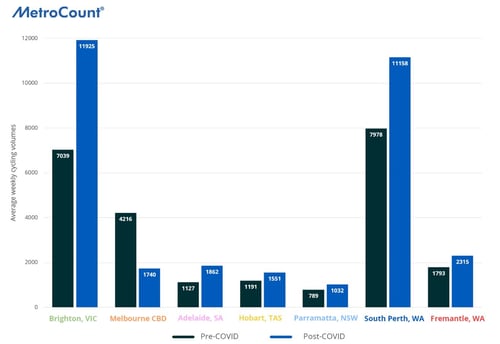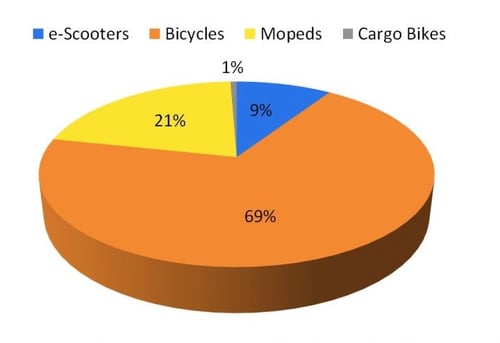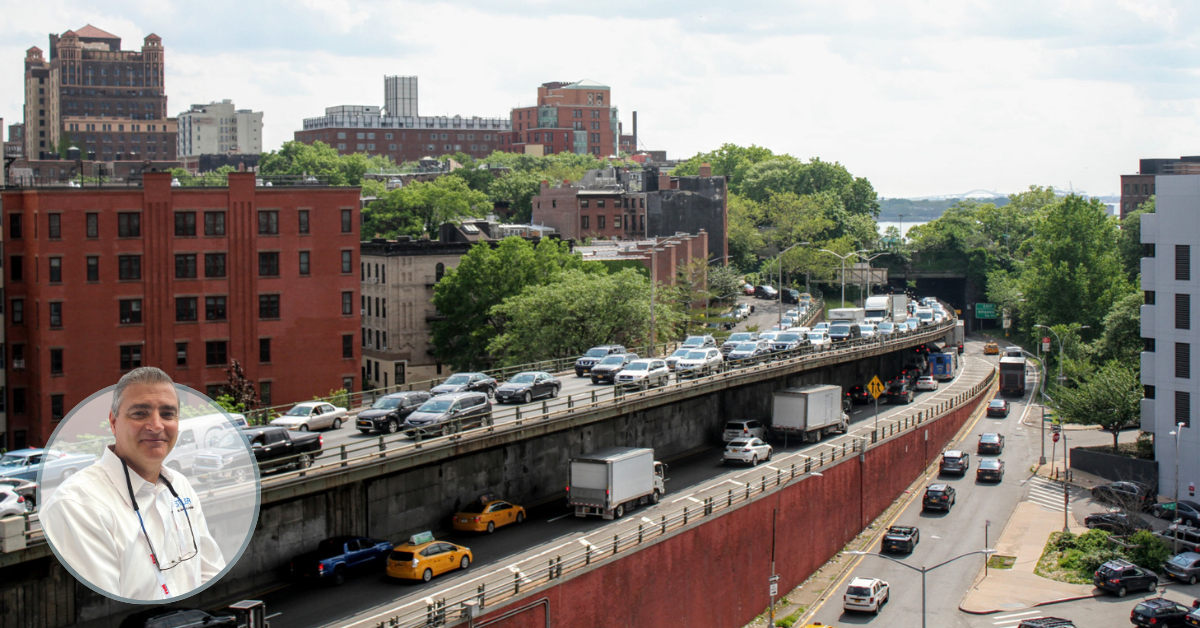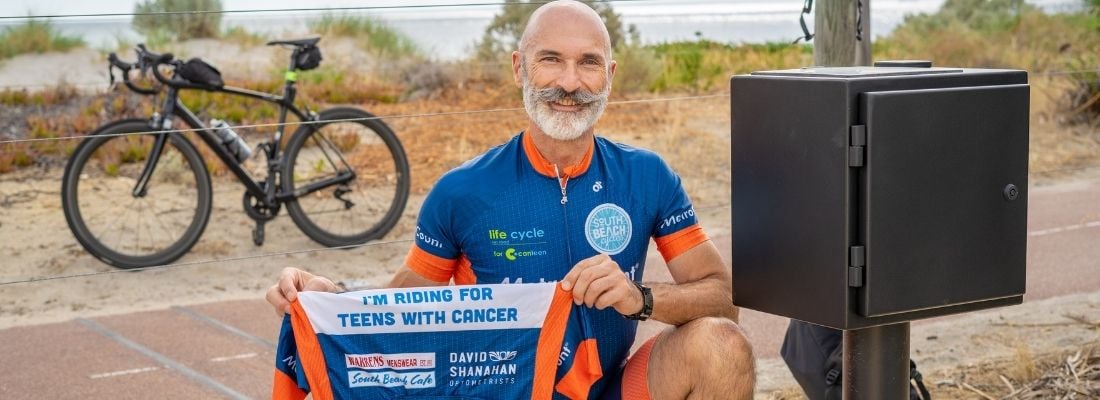“By shifting our focus our social impact has become a lot bigger.”
With the continuous growth of the population and ongoing urbanization there are numerous mobility challenges. Sustainability, safety and societal impact are amongst our daily concerns. We need to speed up the mobility transition to keep up with the fast changing global dynamics, which requires inventive approaches and better solutions. In this series we share inspiring and innovative cases from all over the world. MetroCount’s Business Development Manager Maurice Berger wants to increase his social impact. How does he speed up the mobility transition?
MetroCount is an Australian transport technology company renowned for over 30 years for manufacturing extremely robust and reliable traffic counters. Today, MetroCount systems are used in 120 countries to inform safer and more efficient roads, cycle ways and share paths.
MetroCount is excited to be at the forefront of monitoring active travel movements alongside motorised traffic and creating innovative solutions to help governments make the most of traffic data. A brand new map-based, automated analysis software is helping to do just that.
“My background is an industrial chemist and I started my career wearing a white lab coat. However, I realised I preferred to sit with the clients and listen to their needs instead. After working in sales there, I started as Business Development Manager at MetroCount 18 years ago. I mostly work on project management for complex products in Turkey and China and I give online training courses on our products.”
"After the pandemic struck, traffic wasn’t normal and clients at first felt there was no point monitoring it."
“The pandemic has forced us to rethink a lot of what we do. We initially had a drop in sales, because traffic wasn’t normal and clients at first felt there was no point monitoring it. That was an interesting argument. So we had to continue that discussion. Would it be smart not to monitor for a period of time and then start again when it is normal? It took a while for the community to understand that there is no point waiting. We would never know what was going to be the new normal and when. You would not know what changed. What was important to know for instance is that in some places the number of crashes increased. With less vehicles on the road, people chose to drive faster. So it was important to measure speed in order to manage road safety.”
“During the last twelve months we have seen cycling volumes triple in some areas. In Australia, there’s been a sustained increase of more than 50% in cyclists and weekend volumes have doubled. Even in the winter months the figures were much higher than previous years."
"So our attention has shifted to pop-up cycle lane monitoring. We’ve invested more in pedestrian and bicycle monitoring and can now differentiate bikes from scooters and pedestrians. We also created an online software for anyone to quickly and easily analyse data and view statistics on an interactive map. This means we can provide data-as-a-service to customers who don’t have the time or expertise for data collection. We upload all the cycle lane data to the online platform and you can immediately see the speeds, direction, volume and type of mobility mode. In this way we can all increase the mobility transition.”
“Monitoring the modal split is not easy to do in both urban and rural locations. It is difficult to determine what effect an increase in cyclists has on motorised vehicle volumes. This requires long-term data collection that is now possible with our permanently embedded systems."

“For example, in 2019 we analised the modal split on a Paris bike lane. When analysing the data it is clear to identify daily, weekly and monthly trends:
- most path users ride conventional bikes (69.1%), followed by mopeds (21.1%), e-scooters (9.3%) and cargo bikes (0.6%);
- strong trend of increased speeds during the night;
- preference for south-bound journeys (more than double south-bound traffic than north-bound traffic);
- the majority of users are likely commuters as opposed to leisure-riders.

Differentiating active travel modes on a Paris bike lane
"We have an ever increasing health issue related to being inactive. Something huge needed to change."
“By shifting our focus to active transportation monitoring, our social impact has become a lot bigger. We have an ever increasing health issue related to being inactive: increased diabetes, increased obesity since the ‘70s and ‘80s. Something huge needed to change and I think this is what is happening right now. This is so important!”
“Luckily, already a lot of people have noticed that they do not need to travel by car. I am not saying you should get rid of your car, but e-scooters and e-bikes will become more popular as they allow people to move further than by normal bike. The more people see this, the more people will start to use e-mobility. Also more and more governments are investing largely in active travel infrastructure to encourage more people to take up cycling and walking.”
“The other benefit active mobility brings, is engaged communities. The more people cycle or walk, the closer we are to each other. When sitting on a train, we all have our heads down with eyes on our phones. Cycling and walking offers a way to increase social contact with the people around you.”
"We need to change our view of streets to be more people-oriented and less car-centric"
“I believe future mobility won’t be so much about science fiction and hover boards. The future is more about increased infrastructure for active transportation. More separated bike lanes, bike parking and local streets with lower speed limits. Should we decrease speeds to 30km per hour or even lower on low-traffic streets? If so, you cannot just put a sign on a pole and expect a change. There needs to be changes to road infrastructure too such as loops, bumps, dead-ends etcetera. We need to change our view of streets to be more people-oriented and less car-centric. We need more trees, green spaces and even to reconsider the way we build our houses. Let’s no longer build a house with a garage out the front that cuts us off from our neighbours. There is still a lot we need to do and all of it relates to mobility.”
“The biggest challenge for future mobility lies in nurturing government organisations to make larger change. We need to work on a long term basis. Governments have the tendency to stop projects too soon for them to show results. We see more clients push boundaries on what we can do for them. One challenge is to keep to what we know and do it well versus trying new things. In our field there is more AI and video coming along. We need to ask where MetroCount fits in.”
“I find it my personal challenge to make social impact! Taking part in advisory and advocacy groups is very important to listen to what the community wants before the government asks us to implement it. We want to be part of the community discussion from the start. Creating more car free days is a great opportunity to engage communities and increase health, but we need more new ideas. I get a lot of energy from new people having new ideas. You should never get stuck in the current or familiar just because you think it works. We are the ones to make the actions take place and make sure this transition will continue. It is important to be involved, be vocal and keep this going.”






